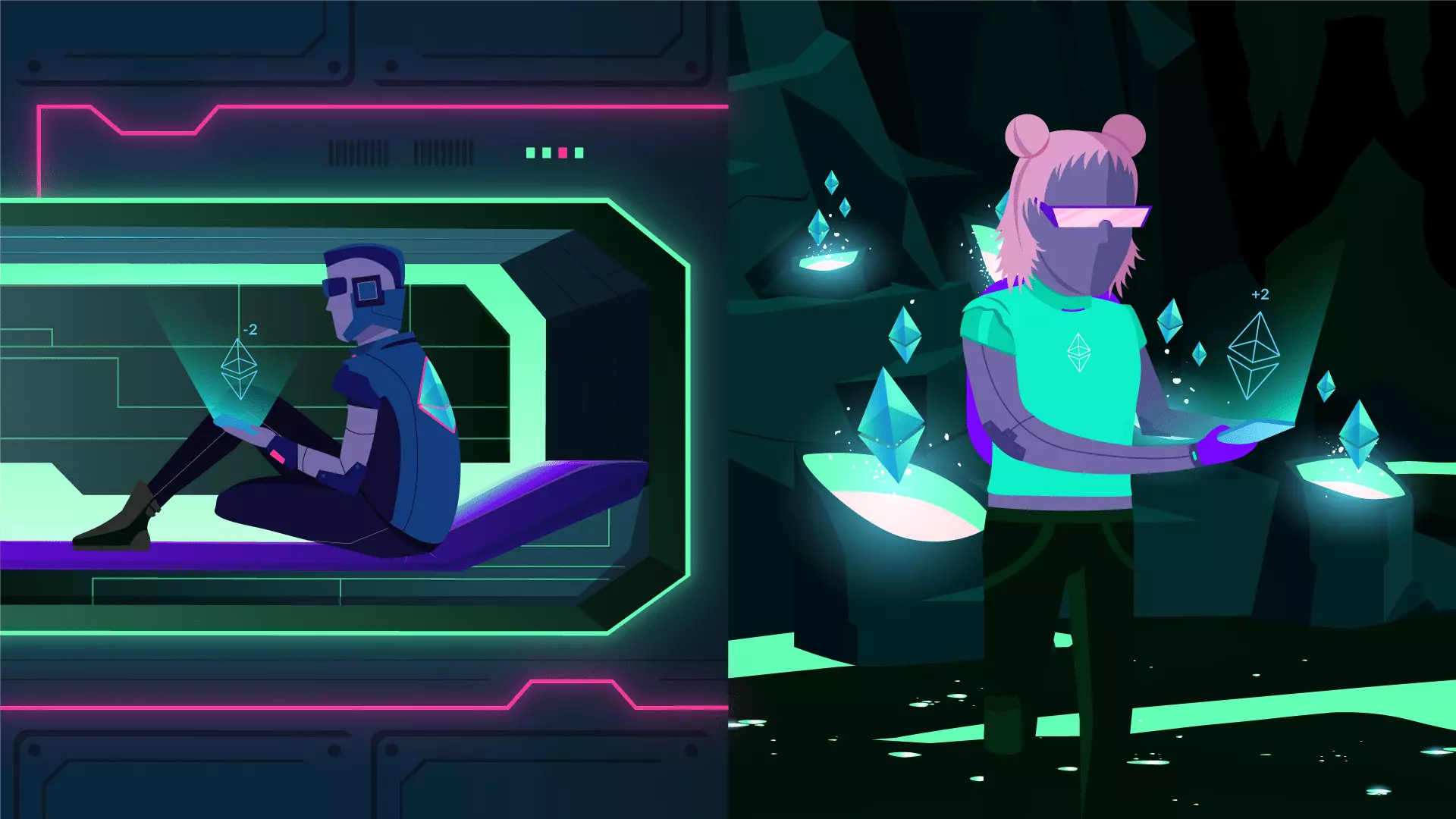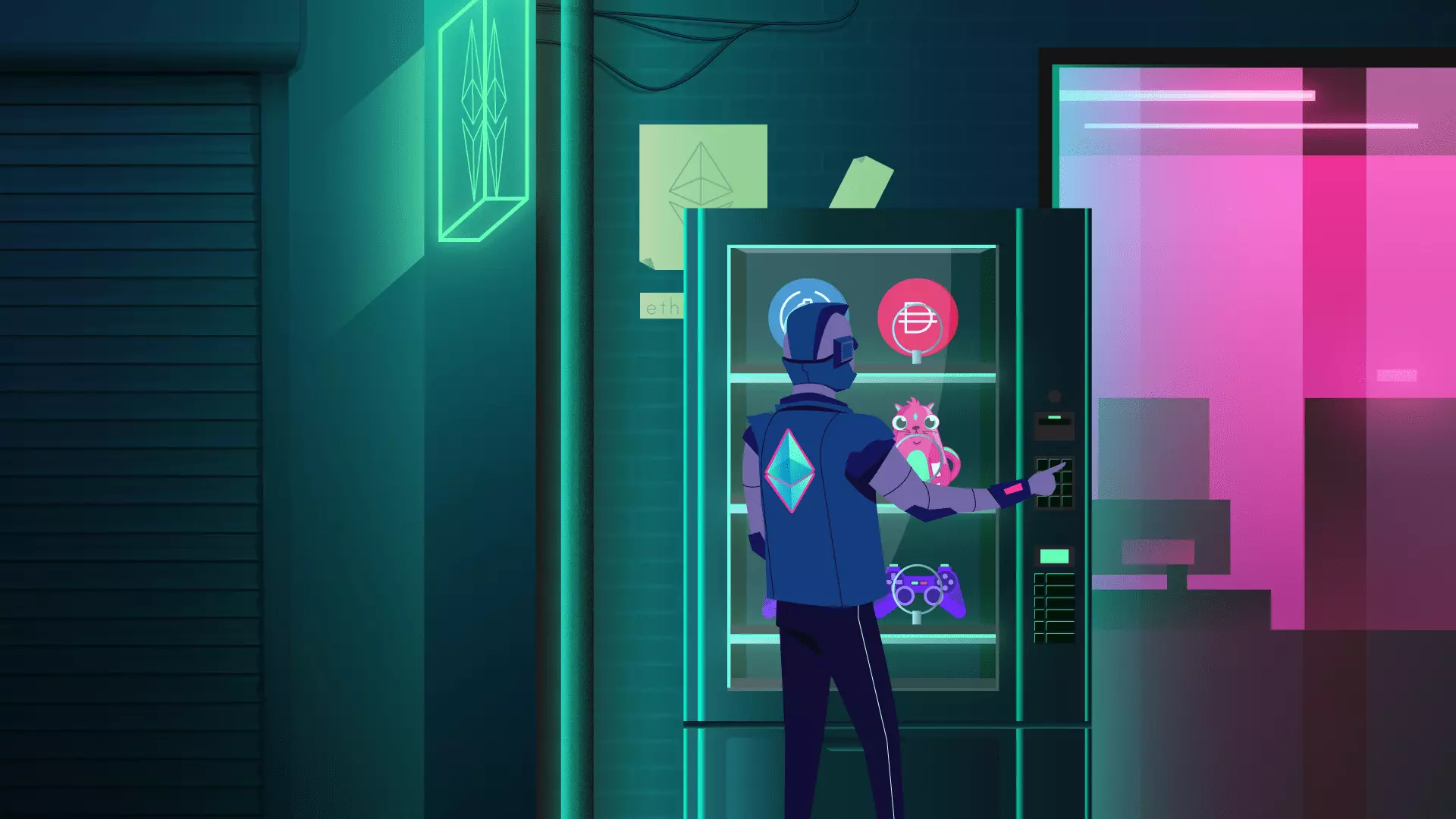Token creation. Decentralized records. Ethereum block mining. Rewards in Ether. Validation time. The change to the proof-of-stake model.

Ethereum tokens are created from mined blocks, similar to Bitcoin. For each block mined, the network creates 2 ETH that it gives to the miners as compensation.
Mining also has another role that is at least as important, since it is the technology that makes decentralized record-keeping possible.
The original mining system of Ethereum is very similar to that of Bitcoin. Miners compete to solve a mathematical puzzle that, if correct, allows the block to be validated, added to the blockchain, and transmitted to the rest of the network.
If the miner finds a solution to the problem, the reward is given in Ether and the block is distributed for each node to add to its own copy of the registry.

ETH tokens are generated through mining, a computer process that also reinforces the security of the network.
How long does it take to validate a block on Ethereum
The validation time of a block in Ethereum in its proof-of-work model is between 12 and 15 seconds. If the miners manage to solve the puzzles faster or slower, the algorithm automatically readjusts the difficulty of the problem so that the miners return to the approximate solution time of 12 seconds.
Part of that speed has to do with the fact that Ethereum blocks have no predetermined size, no minimum, no maximum. Are you interested in knowing how Ethereum transactions are processed? We leave you this super educational website, to see how they are composed.
The change to proof-of-stake
Ethereum, the second crypto network in market capitalization, has almost completed its transition to the proof-of-stake model, after having successfully carried out the last test on the testnet in mid-March 2022.
According to the Ethereum Foundation, this change will reduce the network’s energy consumption to 0.05% of what it currently uses, with the possibility of operating the entire blockchain with around 2.6 megawatts. In rough terms, this means that for the energy cost that one operation previously had, 2,000 will now be able to be carried out.
If you want to better understand how this change works and what it entails, you can review this article.
Sending and receiving ETH
October 29, 2020
Wallets for Ethereum. Physical existence of ETH and other tokens. GAS and the cost of transactions on Ethereum. What is a gwei.

All sending or receiving in Ethereum is done from a wallet. Additionally, wallets that allow you to send or receive Ether are usually prepared to send and receive other tokens (ERC-20 and ERC-721, for example) created on the network.
Wallets are a type of software that allows you to create and manage addresses (which is all that is needed to operate) and manage private keys, in order to maintain control over our cryptocurrencies.
But these wallets do not work like the ones you carry in your pocket, despite sharing the name. ETH wallets (or any other cryptocurrency or token) do not store them in their service or anywhere else, but are computer programs that allow us to interact with our crypto funds.
Just like any other cryptocurrency, ETH does not exist in physical form. Cryptocurrencies are records on a blockchain, and wallets only interact with each network to enable the transactions we want to execute within it.

Users can send and receive ETH and other tokens on the Ethereum network in a simple, secure and fast way.
What is GAS
To operate, all you need is an address. In addition, transactions are paid in GAS, a unit of measurement that is used to price operations according to the amount of processing they consume.
Ethereum is not only a cryptocurrency, but also a decentralized computer, and GAS is the way the system found to grant processing priority to this or that transaction.
Miners charge for their block space in GAS units, which are charged in ETH, and that is why it is necessary to have the Ethereum cryptocurrency to transfer others that use its blockchain.
The cost of each unit of GAS is measured in gwei. One gwei is equivalent to 0.000000001 ETH. The cost of making a token transfer, at the close of this guide, was about 90 gwei.
Exploring the Ethereum network
How to explore a crypto network. What is the purpose of exploring a blockchain? Types of information available when exploring Ethereum.

Exploring the Ethereum network is quite simple, as there are websites and programs that allow us to access public blockchain information in a very simple way.
In addition, these services also generate indicators with relevant data, which can be useful for users to make decisions.
One of the most recognized sites in this sense is Etherscan, which incorporates abundant historical and real-time information on operations in the second crypto network with the highest market capitalization.

Public information from the Ethereum blockchain provides users with relevant data to make decisions.
There are many things that can be known and learned by exploring the Internet, and to do so you do not need to register. Everything is in sight.
Review the operations of your Ethereum or any other wallet.
Know the transaction volume for a particular day or period.
Know the price of Ethereum almost in real time, converted to pesos or dollars.
See each mined block and know which mining node it was created by.
Review the average commission for trades, almost in real time.
Check the price of GAS (fee per transaction).
Know which tokens are most used.
Smart contracts
What is a smart contract and how it works. Automated application creations. Immutability and determinism of contracts.


Smart contracts are pieces of code that allow you to automate operations on the Ethereum blockchain.
So, what is a smart contract?
According to renowned popularizer Andreas Antonopoulos, the term “smart contracts” is used to refer to “immutable computer programs that run deterministically in the context of an Ethereum virtual machine as part of the network protocol.”
This allows the creation of countless applications that work automatically without any human intervention. Thanks to smart contracts, everything from new cryptocurrencies to collectible digital items can be created, all with their own rules.
Let’s dig a little deeper into each aspect of the definition.
Computer program: are pieces of code, computer programs. The word “contract” has no legal meaning in this context.
Immutable: Once deployed, the smart contract code cannot change. Unlike traditional software, the only way to modify them is by deploying a new instance. In that case, the current contract is not modified, but a new one is created with the changes that were wanted to be implemented.
Deterministic: the result of the execution of the smart contract is the same for all those who execute it, given the context of the transaction that initiated its execution and the state of the Ethereum blockchain at the time of execution.
Security in Ethereum
Falsified transactions and records. Protections via blockchain and mining. The “51 percent attack.” Asymmetric cryptography.


The way Ethereum was designed provides an extra layer of security for trading tokens or building apps.
In this aspect, cryptocurrencies are tools that become more secure as they have more users. This generates more trust in the network, which in turn generates more users to join, thus creating a kind of positive feedback.
In addition, all transactions are validated using an asymmetric cryptography system that prevents their modification by third parties.

